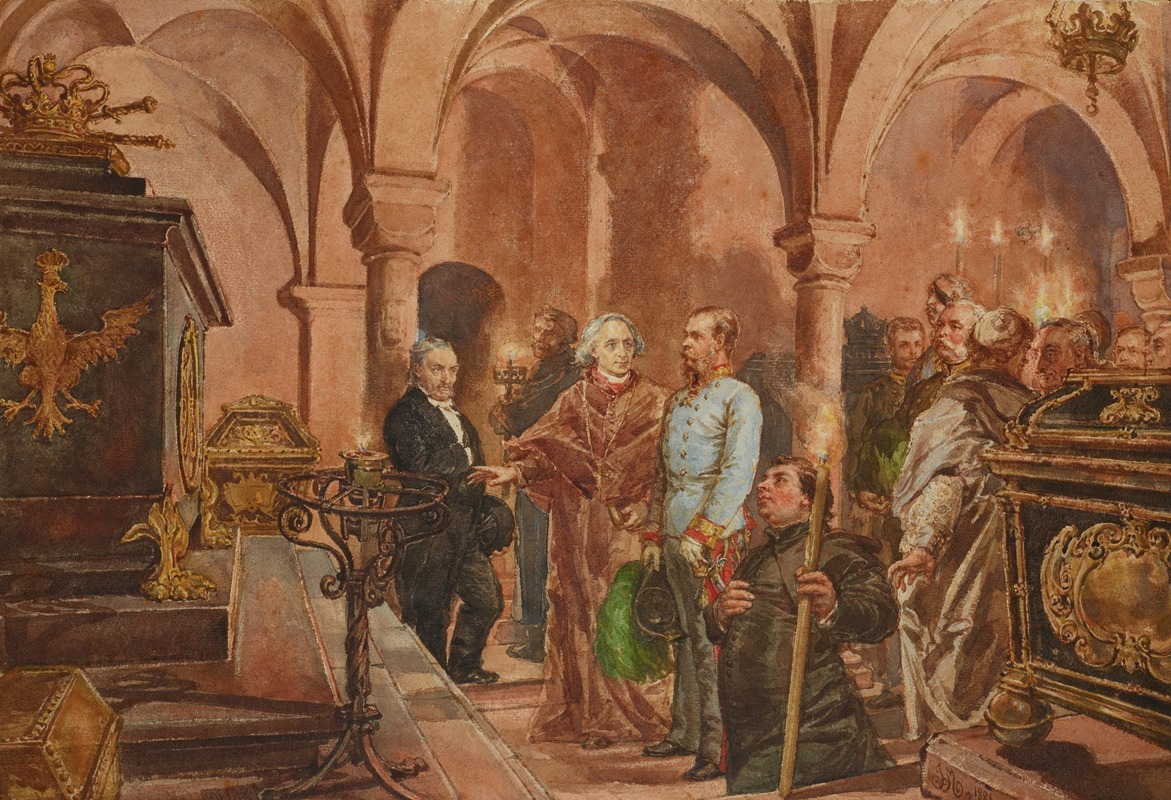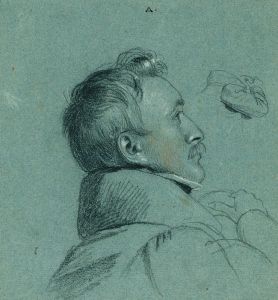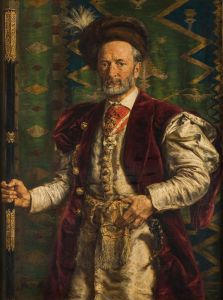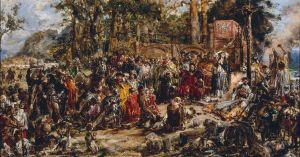
The Emperor in Front of the Sarcophagus of John III Sobieski in Saint Leonard’s Crypt under the Wawel Cathedral
A hand-painted replica of Jan Matejko’s masterpiece The Emperor in Front of the Sarcophagus of John III Sobieski in Saint Leonard’s Crypt under the Wawel Cathedral, meticulously crafted by professional artists to capture the true essence of the original. Each piece is created with museum-quality canvas and rare mineral pigments, carefully painted by experienced artists with delicate brushstrokes and rich, layered colors to perfectly recreate the texture of the original artwork. Unlike machine-printed reproductions, this hand-painted version brings the painting to life, infused with the artist’s emotions and skill in every stroke. Whether for personal collection or home decoration, it instantly elevates the artistic atmosphere of any space.
"The Emperor in Front of the Sarcophagus of John III Sobieski in Saint Leonard’s Crypt under the Wawel Cathedral" is a painting by the renowned Polish artist Jan Matejko. Created in 1867, this work is a significant piece in Matejko's oeuvre, reflecting his deep interest in Polish history and his skill in historical painting.
Jan Matejko (1838-1893) is one of Poland's most celebrated painters, known for his large-scale historical paintings that depict pivotal moments in Polish history. His works are characterized by their meticulous attention to detail, vibrant colors, and the dramatic portrayal of historical events and figures.
The painting depicts a poignant scene set in the crypt of Saint Leonard under the Wawel Cathedral in Kraków, Poland. This crypt is the final resting place of several notable Polish figures, including King John III Sobieski. Sobieski, who reigned as King of Poland and Grand Duke of Lithuania from 1674 until his death in 1696, is best remembered for his military prowess, particularly his decisive victory at the Battle of Vienna in 1683, which halted the advance of the Ottoman Empire into Europe.
In the painting, an emperor, whose identity is not explicitly stated but is often interpreted as Emperor Franz Joseph I of Austria, is shown standing solemnly before the sarcophagus of John III Sobieski. The emperor's presence in the crypt signifies a moment of reflection and respect for the Polish king's legacy. The setting within the crypt, with its dim lighting and somber atmosphere, enhances the sense of reverence and historical significance.
Matejko's choice to depict this scene underscores the enduring impact of Sobieski's achievements and the respect he commanded even beyond Poland's borders. The painting also reflects the complex historical relationships between Poland and its neighboring empires, particularly Austria, during the 19th century.
The Wawel Cathedral, where the crypt is located, is one of Poland's most important religious and historical sites. It has been the coronation site of Polish monarchs and a burial place for many of the nation's most significant figures. The inclusion of this setting in Matejko's painting further emphasizes the national importance of the scene.
Matejko's work is known for its historical accuracy and attention to detail, and "The Emperor in Front of the Sarcophagus of John III Sobieski in Saint Leonard’s Crypt under the Wawel Cathedral" is no exception. The artist's dedication to portraying historical events with precision is evident in the careful rendering of the crypt's architecture and the emperor's attire.
This painting is a testament to Matejko's ability to capture the essence of historical moments and figures, making them accessible and meaningful to contemporary audiences. Through his art, Matejko not only commemorates the past but also inspires a sense of national pride and historical awareness.
In summary, "The Emperor in Front of the Sarcophagus of John III Sobieski in Saint Leonard’s Crypt under the Wawel Cathedral" by Jan Matejko is a significant historical painting that reflects the artist's mastery in depicting Polish history. It portrays a moment of reverence for one of Poland's greatest kings, set within the historically rich context of the Wawel Cathedral's crypt.






![Karnac [Karnak]. Nov. 29th, 1838](/imgs/217503/s/david-roberts-karnac-karnak-nov-29th-1838-5a10b435.jpg)
![Pyramids of Geezeh [Giza].](/imgs/217529/s/david-roberts-pyramids-of-geezeh-giza-edcbd9cd.jpg)
![Temple of Wady Saboua [Wadi al-Sabua], Nubia.](/imgs/217551/s/david-roberts-temple-of-wady-saboua-wadi-alsabua-nubia-52e62db.jpg)









